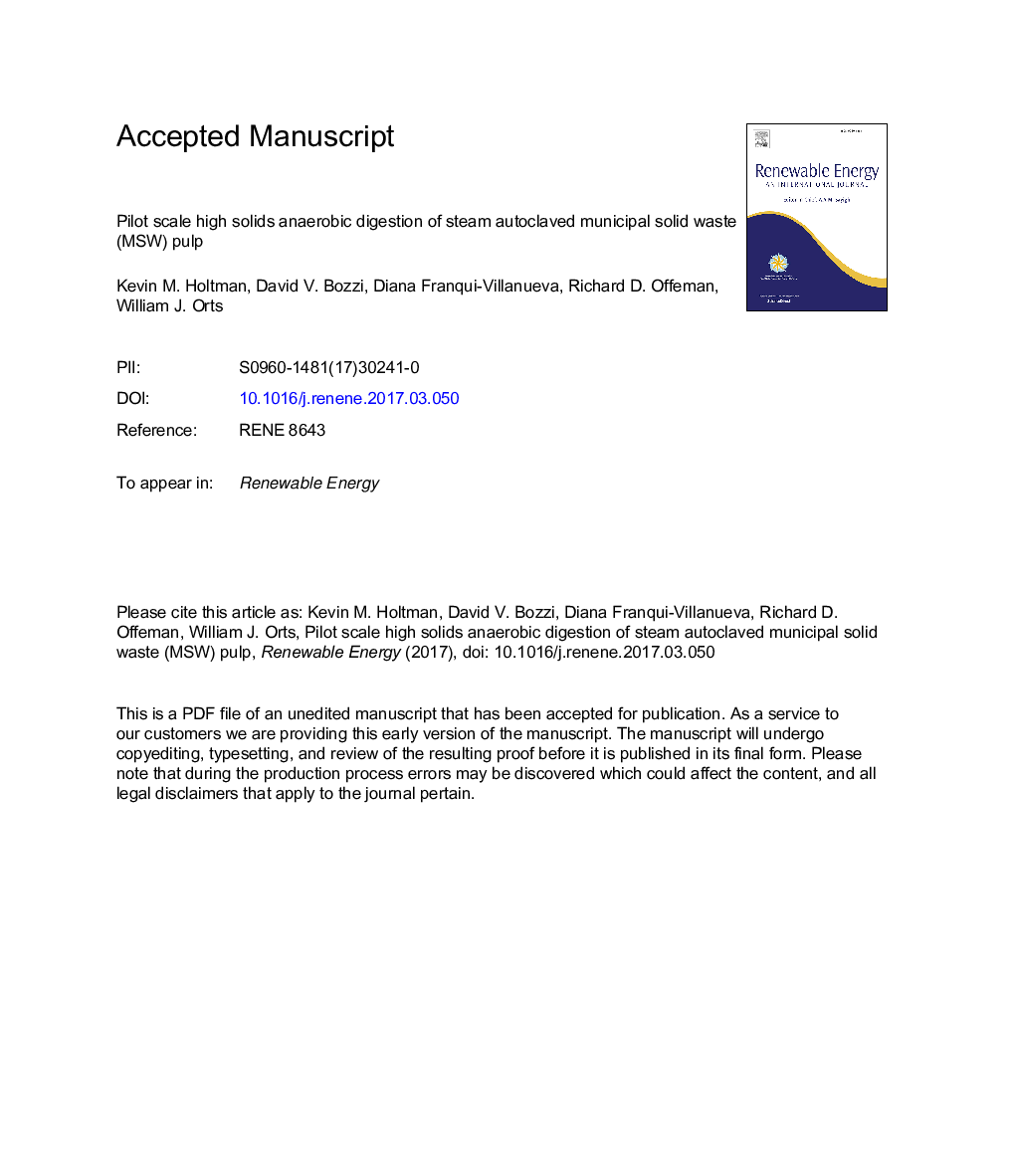| Article ID | Journal | Published Year | Pages | File Type |
|---|---|---|---|---|
| 4926028 | Renewable Energy | 2017 | 35 Pages |
Abstract
Steam autoclaving is an efficient method for the separation and near complete recovery of organics from MSW. The material produced by the autoclave contains a high concentration of solubilized food waste absorbed onto a lignocellulosic matrix. Reported here is the operation of a 1500 gal (5677Â L) high solids anaerobic digester to digest this feedstock. Total solids (TS) reductions were high, 56%, and volatile solids (VS) and biodegradable volatile solids (BVS) reductions were 63 and 79%, respectively. Gas yields were also high, producing 248Â L CH4/kg VS fed or 393Â L CH4/kg VS destroyed at a methane content of 60%. Unique design elements such as hydraulic conveyance of material, in situ classification, and in-place buffering to maintain pH stability were tested and confirmed. The digestate passed all criteria for land application of biosolids in the US, but exceeded the EU limits for Cu, Ni, and Zn.
Related Topics
Physical Sciences and Engineering
Energy
Renewable Energy, Sustainability and the Environment
Authors
Kevin M. Holtman, David V. Bozzi, Diana Franqui-Villanueva, Richard D. Offeman, William J. Orts,
